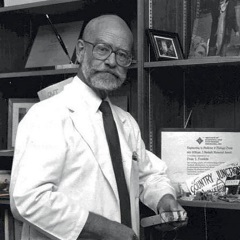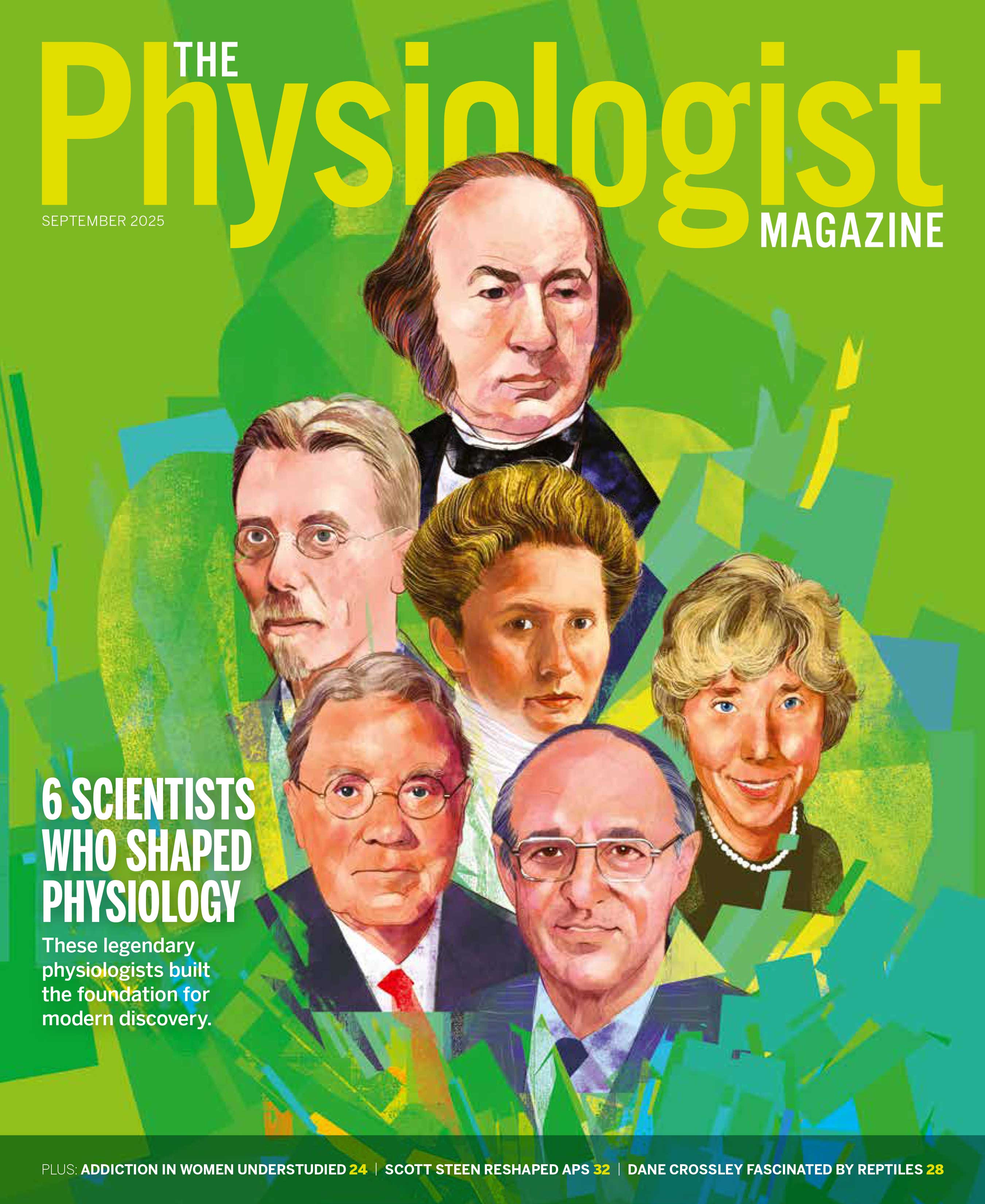Lighting the Way, Raising the Bar
Dean Franklin’s legacy continues with Young Investigator Award.
.jpg?sfvrsn=d844f470_2&MaxWidth=500&MaxHeight=500&ScaleUp=false&Quality=High&Method=ResizeFitToAreaArguments&Signature=A8864E82C72B1216FF1AB9D92BF42B539A16CC71)
Dean Franklin was a leader in biomedical engineering and physiology and a scientist whose work left an enduring mark on the landscape of modern medicine. With significant contributions to science and academia, such as his groundbreaking inventions at the University of Washington and his tenure with the Bomark missile project at Boeing, Franklin’s legacy spans generations through nonclinical and clinical applications of telemetry and ultrasound.
Telemetry Advancements Franklin’s
work in cardiac instrumentation resulted in his co-development of innovative methods to transmit physiological data from conscious animals. This approach involved the use of miniaturized, implantable devices that could monitor and record physiological
parameters such as heart rate, blood pressure and body temperature in real time, without the need for physical restraint. This method marked a significant advancement in how scientists studied the cardiovascular system in a more naturalistic setting,
and it paved the way for similar technologies in clinical health care applications.
Franklin’s
work in cardiac instrumentation resulted in his co-development of innovative methods to transmit physiological data from conscious animals. This approach involved the use of miniaturized, implantable devices that could monitor and record physiological
parameters such as heart rate, blood pressure and body temperature in real time, without the need for physical restraint. This method marked a significant advancement in how scientists studied the cardiovascular system in a more naturalistic setting,
and it paved the way for similar technologies in clinical health care applications.
For example, Franklin conducted one of his most memorable experiments on a restrained giraffe, leveraging the sensors to measure continuous heart rate, blood pressure and temperature data in real time. The results provided insights into how the giraffe’s cardiovascular system, given its long neck, manages the immense pressure needed to pump blood to the brain. This research contributed to our understanding of adaptive physiological mechanisms. Franklin’s use of telemetry underscored the versatility and potential of non-invasive monitoring technologies in studying complex biological systems.
In another experiment, he expanded his research to sled dogs, aiming to understand the cardiovascular adaptations developed in response to extreme physical exertion. By equipping sled dogs with telemetry devices, he was able to monitor heart rate, blood pressure and other physiological parameters as they navigated challenging terrains. This study revealed insights into how the cardiovascular system of sled dogs manages the demand for increased oxygen and nutrient supply during intense activity. It also highlighted the potential for human cardiovascular health improvement.
Disease Treatment and Discovery
Franklin also laid the foundation for advancements in clinical technologies, such as remote patient monitoring. This capability has proven invaluable in the management of
chronic diseases, such as heart disease and diabetes, enabling continuous monitoring of patients’ vital signs and physiological parameters outside hospital environments. Franklin’s methodologies facilitated the discovery of new disease mechanisms,
enabling researchers to observe the effects of diseases on the body’s physiological processes in real time, under natural conditions. This led to more targeted and effective treatments, underscoring his lasting influence on medicine and patient
care.
Setting a Benchmark
By eliminating the need for physical constraints and invasive monitoring techniques, his work significantly reduced stress and discomfort experienced by animal subjects during experiments. This shift improved
the quality of life for these animals and enhanced the reliability of data collected, as the effects of stress hormones on physiological measurements were minimized. Franklin’s approach underscored the importance of ethical considerations in scientific
research, leading to widespread adoption of his methods and a reevaluation of experimental protocols to prioritize animal welfare.
Beyond his direct contributions to medicine and physiology, Franklin was a beacon of inspiration for his commitment to the scientific method and his passionate pursuit of knowledge. He believed every discovery was a stepping stone to the next, a philosophy that imbued his work with a sense of infinite possibility.
The Dean Franklin Young Investigator Award
To recognize Franklin, Harvard Bioscience (HB) established the Dean Franklin Young Investigator Award. His original concepts continue to serve as the inspiration behind many of HB’s most technologically advanced physiological monitoring
systems developed for today’s nonclinical research.
To better understand the influence of the Dean Franklin Award, Jami Burkhardt, RN, Data Sciences International (an affiliate of Harvard Bioscience, Inc.), caught up with 2015 Dean Franklin Young Investigator Award recipient Eric Belin de Chantemèle, DSc, over a video chat.
 Spending a lot of time around animals as a child sparked Belin de Chantemèle’s immediate natural curiosity for how the body functions. This curiosity
laid the foundation for his career and the goals he’s set out to accomplish through his research. After earning his doctorate in cardiovascular physiology in Lyon, France, he joined David Stepp’s lab at Augusta University, where he has continued
to conduct research in his own lab in the Vascular Biology Center. Today, as professor at the Vascular Biology Center at Augusta University, his research focuses on understanding how metabolic dysfunctions, particularly obesity in young women, triggers
hypertension, as well as HIV-associated hypertension.
Spending a lot of time around animals as a child sparked Belin de Chantemèle’s immediate natural curiosity for how the body functions. This curiosity
laid the foundation for his career and the goals he’s set out to accomplish through his research. After earning his doctorate in cardiovascular physiology in Lyon, France, he joined David Stepp’s lab at Augusta University, where he has continued
to conduct research in his own lab in the Vascular Biology Center. Today, as professor at the Vascular Biology Center at Augusta University, his research focuses on understanding how metabolic dysfunctions, particularly obesity in young women, triggers
hypertension, as well as HIV-associated hypertension.
What inspired your research?
Two advisers were a lasting influence. We focused on the hypothesis and the data, rather than whether findings would fit with what was already published
or not. It was about making sure we’re doing the experiments well and doing everything right.
We have preconceived hypotheses and that’s good, but we need to be open to the fact that maybe other experiments can challenge these findings and if it’s done well, that’s the way we should go. It was these open-minded scientists that inspired me to achieve my doctorate.
Another researcher I never directly worked with but had numerous inspiring interactions with early in my career was Dr. Allyn Mark, a notable name in obesity and hypertension research. He would attend my poster presentation and ask the same thing every time, “What did you get? What will you be teaching me today?” That really impressed me; he’s someone at the top of his career and he’s having a discussion with me!
What motivated your submission for the Dean Franklin Young Investigator Award?
Hoping to accelerate my research in an independent environment,
I submitted my work on how obesity leads to hypertension in young obese women for consideration. At the time my motivations were very simple: I really applied to this award as a means to conduct experiments the way I wanted, when I wanted to. I needed
the ability to focus on hypertension.
Looking back, how has the Dean Franklin Award impacted your research?
We were able to accelerate our research because we could access the telemetry systems at our pace when we needed them.
Prior to winning the Dean Franklin Award, my team of collaborators included one technician and two postdoctoral researchers. Today, we have three technicians, two postdoctoral researchers, four graduate students and one junior faculty member.
It was nice to be recognized and rewarded as a scientist studying hypertension. We felt like this put us (the investigators) and the lab on the map.
What would you say to someone considering submitting their work for the award?
This award (and others like it) are extremely helpful for a researcher’s career as an acknowledgement of a hard-earned achievement, based on science. It will open doors and create opportunities for scientific discovery.
This content was produced in partnership with Harvard Bioscience. Learn more about Harvard Bioscience’s commitment to supporting the advancement of innovation in scientific research.
This article was originally published in the September 2024 issue of The Physiologist Magazine. Copyright © 2024 by the American Physiological Society. Send questions or comments to tphysmag@physiology.org.
The Physiologist Magazine
Read the Latest Issue
Don’t miss out on the latest topics in science and research.
Contact Us
For questions, comments or to share your story ideas, email us or call 301.634.7314.


